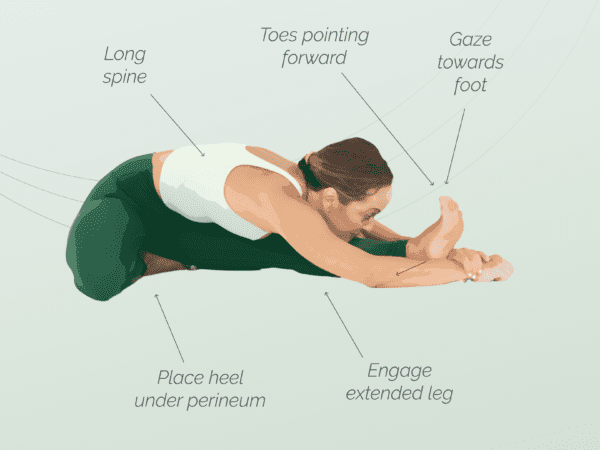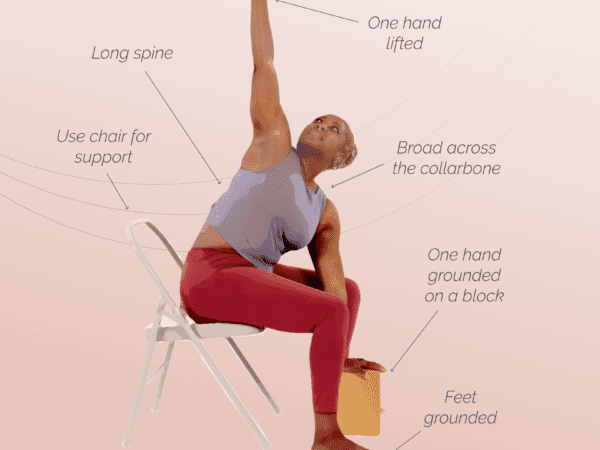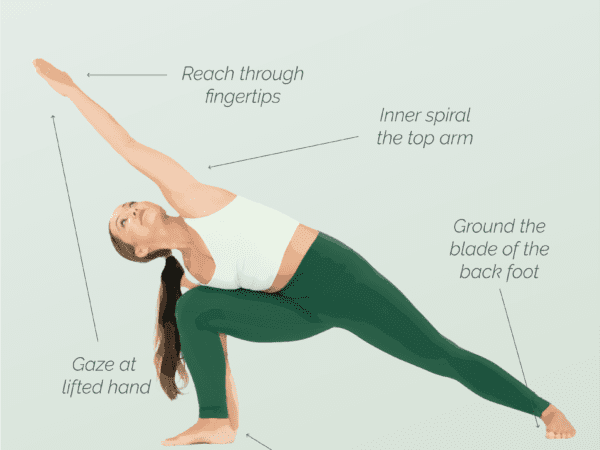Pasasana or noose pose is the first pose of the Ashtanga yoga intermediate series and is a combination of a deep twist and a deep squat. You’ll need a good grasp of both of these elements to begin.
Just like other twisting poses, pasasana helps detoxify the internal organs. It also helps prepare the shoulders and back for deep back bending.
Doing a twist in a deep squatting position gives you stability in your legs, providing the foundation you need for more challenging poses.
To get into the twist needed for this pose, you will need flexibility and articulation of the thoracic spine. Many twists require you to raise through the centerline and pivot along the body’s central axis. Pasasana is different because it requires a lateral stretch that moves your body off the centerline so you can bind around both of your legs.
Benefits of Pasasana
This twisting pose has many benefits. They include:
- Strengthens your thighs
- Strengthening your ankles and knees
- Detoxifies and stimulates internal organs
- Stretches back muscles
- Stretches shoulders
- Relieves back and neck pain
- Increases lung capacity
- Helps with digestion
Contraindications for pasasana
Avoid doing pasasana if you have ankle injuries, knee injuries, back injuries, or herniated discs.
How to do pasasana with a block
To get a good idea of how to do the pose you can practice it while sitting on a block.
Sit on a block with your knees bent in front of you and your soles on the floor.
Shift your knees slightly to the right while keeping your heels down on the floor. Your chest is forward close to the thighs.
Suck your belly in and move your torso to the left. Place your left hand on the ground and move your entire torso to the side.
Fold your chest down on the outside of the left thigh. Next, drop your right shoulder down around the outer edge of the left knee.
You can stay here with your hands in prayer or go for the bind.
When you are ready to bind, you’ll know because your elbow is past the plain of your shin.
Reach your right arm around the legs and your left arm around your back. Catch your hands, grasping them together. Look over to the left.
Use the block as your foundation to prevent twisting of the hips.
Release slowly and repeat the pose on the other side.
Pasasana without a block and the heels up
This version of pasasana will work on balance and help you develop the strength you need to do the full version of the pose. If you have a problem with your ankles, you can use a rolled-up towel or even roll up your mat to support your heels.
You’re not on the balls of your feet in this pose. Your weight is still pressing down through your heels even if you cannot get your heels onto the ground.
Just like when you were sitting on the block, shift your torso to the side to get that lateral stretch.
Make sure your chest comes all the way around to the outside of your thigh.
Bring your right hand down and around your legs. When you’re first trying to do this, you can place your hand on the ground to the outside of your right leg to make sure you’re balanced before going into the bind.
Pivot slightly forward. Lift the left arm and bring it around your back.
Lift your right hand off the ground. Bring your fingers toward each other to do the bind.
If you can, drop your heels to the floor.
Strengthen through your legs and through the pelvic floor. Hold the pose for a few breaths before slowly coming out and repeating it on the opposite side.
How to do pasasana with flat feet
Starting from a squat with your legs together and your feet flat on the floor, bring your left hand to the ground to study yourself and bring your torso to the left side of your legs.
Take your right shoulder down to the outside of your left thigh.
Your right hand reaches around your legs using the internal rotation of the shoulder.
Your left hand reaches behind your back.
Bring your hands together and look over your left shoulder.
Suck your belly inside. Firm your pelvic floor. Stay firm through your legs. Balance and breathe.
Now slowly come out of the pose and repeat it on the other side.
Pasasana is a very challenging pose. You can work on it for years and still feel like you need to work on some more.
Never fight or force the body. All flexibility is about patience. Wait for your body to release and be ready for the pose. You can’t rush the body. If you want to know more about the noose pose, watch this video with Kino.










